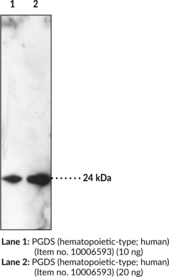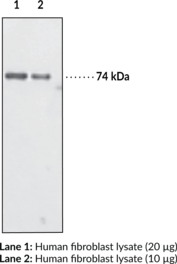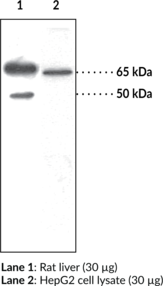Description
Superoxide dismutase (SOD) is an endogenously produced intracellular enzyme present in almost every cell in the body.{15491} It works by catalyzing the dismutation of the superoxide radical O2- to O2 and H2O2, which are then metabolized to H2O and O2 by catalase and glutathione peroxidase.{15490,15493} In general, SODs play a major role in antioxidant defense mechanisms.{15492} There are two main types of SOD in mammalian cells. One form, SOD1, contains Cu and Zn ions as a homodimer and exists in the cytoplasm. The two subunits of 16 kDa each are linked by two cystines forming an intra-subunit disulphide bridge.{15491} The second form, SOD2, is a manganese-containing enzyme and resides in the mitochondrial matrix. It is a homotetramer of 80 kDa. The third form, SOD3 or EC-SOD, is like SOD1 in that it contains Cu and Zn ions, however it is distinct in that it is a homotetramer, with a mass of 30 kDa and it exists only in the extra-cellular space.{15494} SOD3 can also be distinguished by its heparin-binding capacity.{15489}
Synonyms: Cu/Zn Superoxide Dismutase|SOD1
Immunogen: human Cu/Zn SOD
Formulation: Affinity-purified antibody at 1 mg/ml in PBS, pH 7.0, containing 0.1% sodium azide and 50% glycerol
Isotype:
Applications: WB, IP, ELISA, and IHC
Origin: Animal/Rabbit
Stability: 365 days
Application|ELISA||Application|Immunohistochemistry||Application|Immunoprecipitation||Application|Western Blot||Product Type|Antibodies|Polyclonal Antibodies||Research Area|Oxidative Stress & Reactive Species|Reactive Oxygen|Superoxide Dismutase



